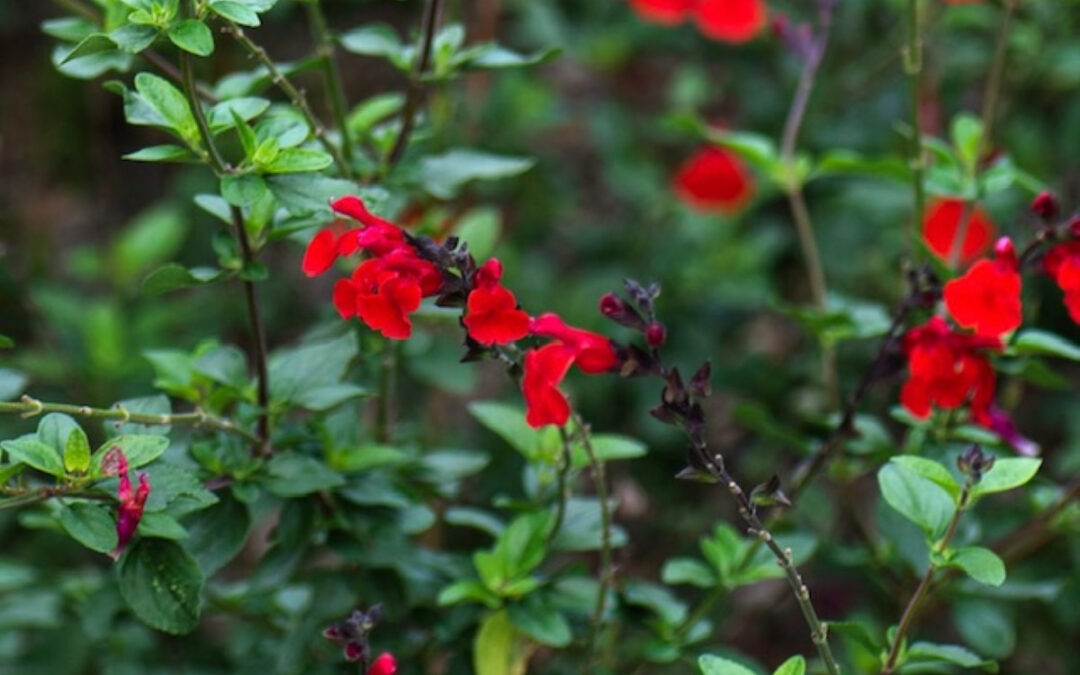Autumn Sage is a perennial plant native to North America – specifically native to Texas Hill Country and Mexico. It is named for Josiah Gregg, a naturalist who found it as he traveled throughout the Southwestern United States and Mexico.
It is a sub-shrub that blooms from March – November on previous or current year’s growth, attracting pollinators. It is specifically known as a magnet for Hummingbirds. It thrives in rocky soils but does well in dry to medium well-drained soils. When first planted, water 2 times a week until it is established but then it does well on its own. If it gets to be terribly hot for too many days with no rain at all, I will sometimes water it, but it seems to thrive even when neglected – perhaps that is why I love this plant so much.
In addition to being draught tolerant, Salvia Greggii does not have many diseases to worry about, and it is highly deer resistant, although I personally believe hungry deer will eat anything.
Autumn Sage does best in full sun but can do well in part-sun. It will live and grow in a shadier area but will not bloom as profusely. This plant can get to be 3 ft. by 3 ft. tall. If you cut it back (no more than 1/3) in August, it encourages more blooms. In February, it can be cut back by ½ to keep it from getting spindly or woody looking. Some gardeners do not mind the spindly more rambling look as it still blooms beautifully so just decide what is right for your garden.
I have the red Autumn Sage and love it, but it also comes in pink, purple, and white. The plant is deciduous in colder climates but often evergreen in warmer climates. I have found it to be both in my yard. If it snows on it or it gets frozen, it may get woody looking, but by springtime or earlier it bounces back full of blooms. If the climate is mild throughout the winter, it remains evergreen.
If you are looking for an easy to grow, low maintenance, drought tolerant plant with beautiful blooms that also attracts pollinators, please consider Autumn Sage (Salvia Greggii).

